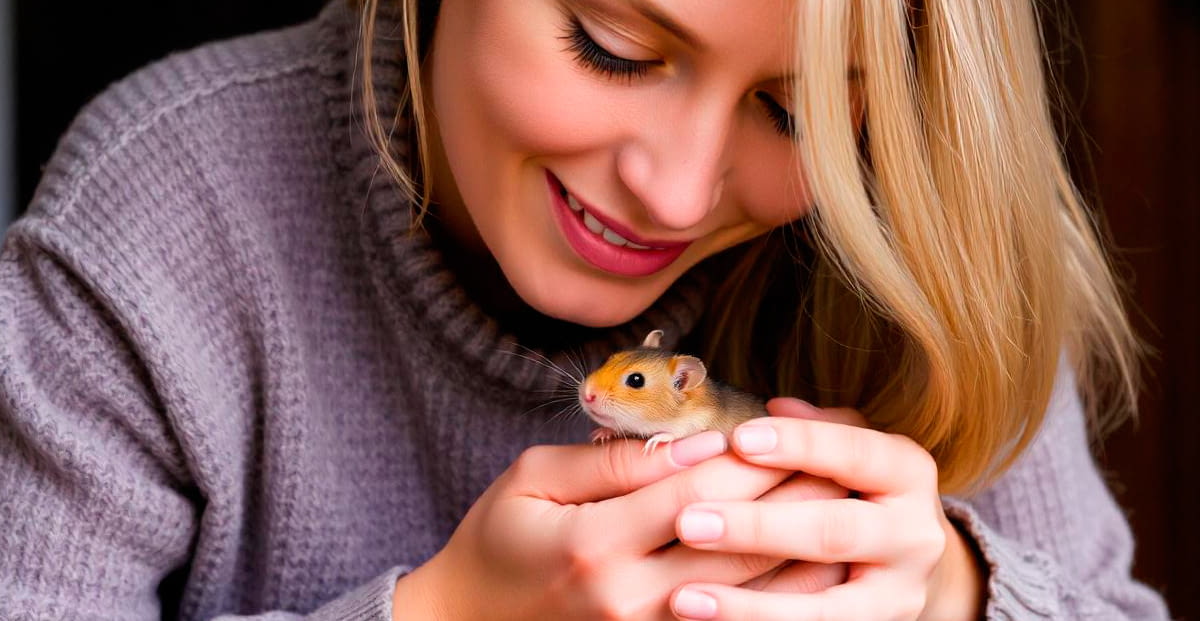
Rodents have become very popular pets due to their compact size, easy maintenance and sociable nature.
Among the most common are hamsters, mice, guinea pigs and rabbits, each with their own particular characteristics that make them unique and suitable for different types of homes. They are intelligent, curious animals and, in many cases, interact affectionately with their owners.
In addition to being fascinating companions, rodents are known for their high reproductive capacity and agility, factors that have allowed them to adapt to diverse environments over time. Their diet varies depending on the species, although in general they enjoy a diet based on seeds, fruits, vegetables and, occasionally, proteins. They are crepuscular animals, which means that they are most active during the early morning hours and at dusk.
These small mammals not only provide companionship, but also offer an educational opportunity about animal behavior and needs, making them an excellent choice as pets for families or individuals who want a low-maintenance animal.
Would you like to know some interesting facts about them?
ALL RODENTS HAVE THE ABILITY TO SWIM
Although rodents are not excellent swimmers, they are able to float and move in water, just like dogs. A notable example is wild rats, which can cross rivers and ponds without any problems.
However, some species, such as guinea pigs, hate swimming and would only do so if they had no other option to survive. It is important to keep this in mind before attempting to get our guinea pigs into the water.
THEY ARE INCREDIBLY INTELLIGENT AND AFFECTIONATE ANIMALS
Despite their small size, rodents possess great intelligence and are extremely cunning, always finding a way to get what they want.
They are also very affectionate animals, enjoying the caresses and attention of their owners. Their sociable nature shines when they are treated with care and affection, making them excellent companions.
THEY ARE VERY COMMUNICATIVE WITH EACH OTHER
Rodents use different methods to communicate and express both their pleasure and their displeasure. They have specific forms of interaction that allow them to convey their emotions and needs.
Hamsters, for example, have their own language! If you have a pair of hamsters at home, observe how they interact with each other; their way of communicating will surprise you.

GUINEA PIGS AND CATS: WHAT DO THEY HAVE IN COMMON?
Purring. Like cats, guinea pigs make a purring sound when they are relaxed and enjoying being petted.
However, it is important to note that guinea pigs can also make a similar sound when something bothers them. They are very sensitive to loud noises such as hammers, drills or slamming doors. Therefore, if you have guinea pigs at home, it is essential to treat them gently so that they respond with affection.
But this similarity between guinea pigs and cats doesn't stop at purring. Even though cats are hunters and carnivores, they usually get along well with guinea pigs due to their similar size.
In many cases, cats may come to see their pets as part of the family. However, it is essential to supervise their interaction and know the temperament of both animals to prevent any potential conflict.
THEIR TEETH GROW CONTINUOUSLY AND CAN BE WHITE OR YELLOW
If you've ever wondered why rodents spend so much time chewing on hard objects, it's because they do it to wear down their incisors and molars, which grow constantly throughout their lives. This activity is essential to keeping their teeth at a manageable size.
As for color, rodents have four incisors that can vary in color, being white or yellow, depending on the species.
For example, the teeth of rats and hamsters are usually a bright yellow hue, while those of guinea pigs are completely white, almost like snow.
RATS HAVE UP TO 22 TEETH
Although all rodents have a considerable number of teeth, rats stand out for having up to 22 teeth. At the back of their mouth are their molars, which continue to grow throughout their life.
ARE RABBITS RODENTS?
No, rabbits are not rodents; they are lagomorphs. The main difference is that they have two pairs of continuously growing incisors, located one behind the other.
Rabbits are also distinguished from rodents by their amount of fur, the way they build their burrows, their body temperature, and their eating habits.
WHAT IS THE LARGEST RODENT?
Among rodents, the capybara stands out for its impressive size. This rodent is larger than a medium-sized dog and is not classified as a small mammal.
Originally from Latin America, the capybara is a herbivore and has a great fondness for swimming, making it a truly remarkable specimen.



